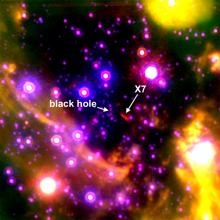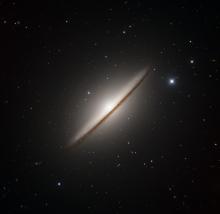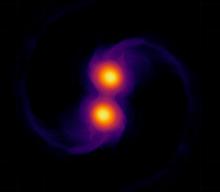Listen to today's episode of StarDate on the web the same day it airs in high-quality streaming audio without any extra ads or announcements. Choose a $8 one-month pass, or listen every day for a year for just $30.
You are here
Event Horizon
A black hole doesn’t have a “surface” — there’s nothing for you to crash into. Instead, it has a boundary — a point of no return for matter and energy. Anything that crosses the boundary is trapped forever inside the black hole.
That boundary is known as the event horizon. It’s the distance from the center of the black hole at which escape velocity — the speed you need to get away from it — equals the speed of light. Since nothing can travel faster than light, nothing within that distance of the black hole’s center can get away. So the event horizon looks like a black hole in space.
The size of the event horizon depends entirely on the mass of the black hole. For a black hole as massive as the Sun, the event horizon would span about three and a half miles. At a million times the mass of the Sun, the black hole would be three and a half million miles in diameter, and so on.
If you approached an event horizon, things would get a little weird. As seen by an outside observer, your clock would begin to tick slower and slower. At the event horizon, it would appear to stop. So anyone watching you approach the horizon would never see you cross it. Instead, you’d appear to stand still, with the light from your spaceship shifted to longer and longer wavelengths — just one of the strange effects around a black hole.
Even though there’s good agreement that black holes exist, no one has ever seen one. But that could change soon. More about that tomorrow.
Script by Damond Benningfield





